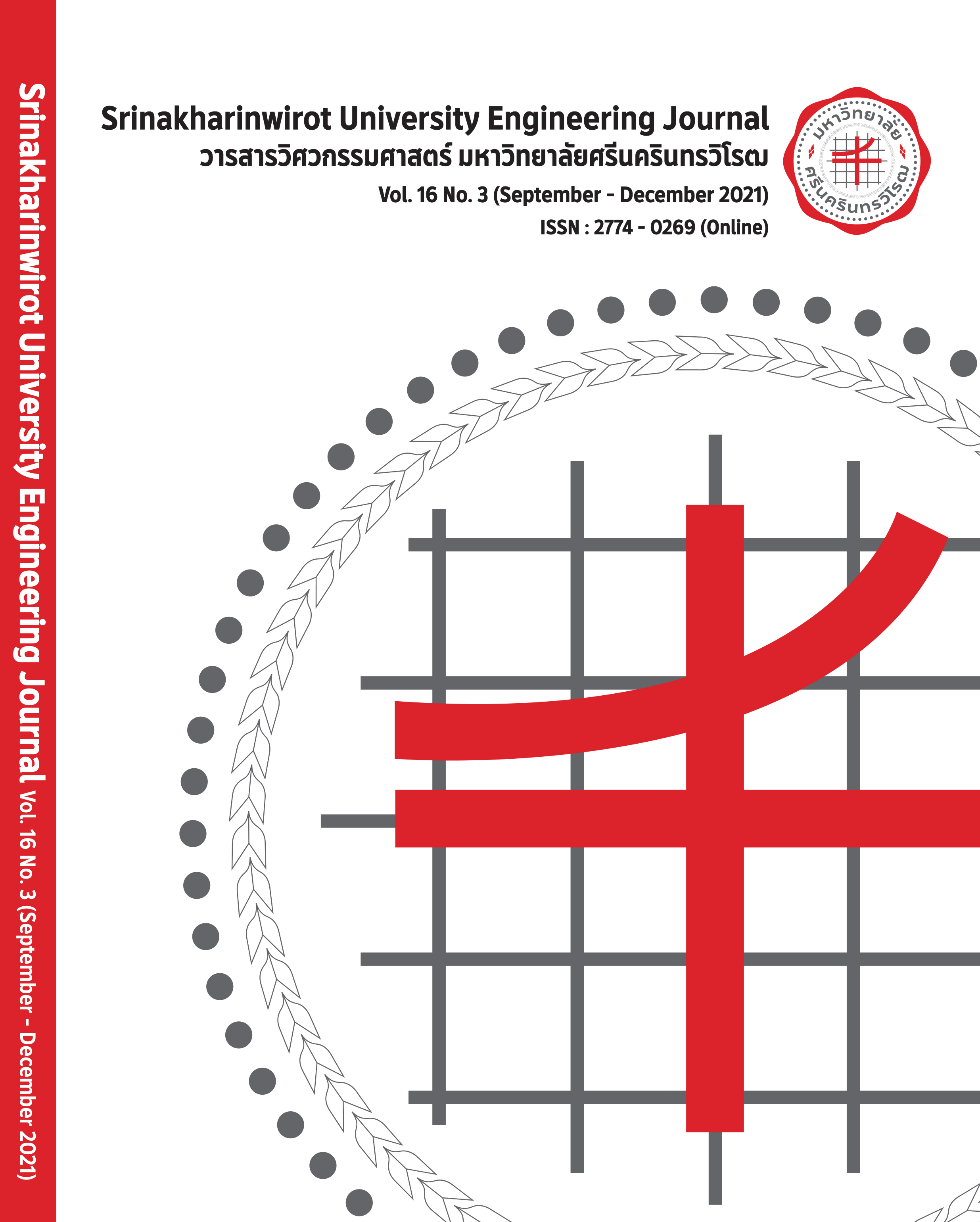Optimal Storage Pattern for Extremely Delicate Produce : Case Study of Sunflower Sprouts
Main Article Content
Abstract
This research study aimed to investigate the effects of temperature change and storage pattern on the shelf life of sunflower sprouts refrigerated after harvesting. This study, which is based on experimental research, finds the appropriate shelf life and the layout of sunflower sprouts in refrigerator by compiling 9 sub-trials. The elapsed times of rottenness were recorded for sunflower sprouts stored in the refrigerator at 3 different temperatures: 2, 5 and 7 degrees Celsius, and 3 different layouts: adjoining layout, spacing layout, and spacing layout near the rear of the refrigerator interior. Each experiment was repeated 5 times. The statistical method used to analyze the data was two-way analysis of variance at a statistically significant level of .05. It was found that the average temperature and the storage pattern had an effect on the shelf life of sunflower sprouts with a statistically significant level of .05. The optimum storage temperature was 5 degrees Celsius and the optimum storage pattern was the adjoining storage pattern. The optimum temperature and storage pattern resulted in the longest shelf life of sunflower sprouts for an average of 6.8 days.
Article Details

This work is licensed under a Creative Commons Attribution-NonCommercial-NoDerivatives 4.0 International License.
Copyright belongs to Srinakharinwirot University Engineering Journal
References
C. Chaiyos and C. Mayukapun, Logistics and Supply Chain Strategy Competing in the Global Market, Nonthaburi : Vision prepress Ltd., 2007, pp. 34-39.
T. Sirisuwannakit, “Logistics system planning for fruit Export,” Journal Thai VCML, vol.5, no.10, pp. 37-52, Jun. 2008.
S. Bunpituk, K. Rattanavijit and S. chomsom, “Study and Analysis of the Supply Chain Management of Mangosteen Producers in Chanthaburi Province,” Industrial Technology Lampang Rajabhat University Journal, vol.5, pp. 105-106, Jan. 2015.
T. Karot, P. Tharawetcharak and C. Pornsing, “Analysis and Logistics Cost Reduction for Organic Vegetables in the West of Thailand,” Journal of Science and Technology, vol.10, no.19, pp. 76-80, Jan. 2019.
C. Siriphanit, Physiology and Technology Harvest Fruit and Vegetables, Bangkok : Odeon Store Ltd., 1998, pp. 89-102.
K. Bunya-atichart, “Posthavest Management and Effects on Quantity and Quality losses of Leafy Vegetable,” Princess of Naradhiwas University Journal, vol.7, no.3, pp. 148-149, Sep. 2015.
D. Bunyakert, Post-storage Harvest Fruit and Vegetables, Bangkok : Odeon Store Ltd., 2002, pp. 59-62.
A.K.Thompson, Fruit and Vegetables Harvesting, Handing and Storage, Oxford, UK.: Blackwell Publishing Ltd., 1996, pp. 198-203.
R.B.H. Will, W.B. McGlasson, D. Graham, and D.C. Joyce, Postharvest an introduction to the physiology and handling of fruit, vegetables and ornamentals, Australia: University of New South Wales Press Ltd., 1998.
J.F. Thompson, F.G. Mitchell, T.R. Rumsey, R. F. Kasmire and C.H. Crisosto., Commercial Cooling of Fruits, Vegetable and Flower, Oakland, CA: University of California, Agriculture and Natural Resource, Published., 2008, pp. 25-26.
A.K.Thompson,Postharvest Technology of Fruit and Vegetables, Oxford: Blackwell Science Ltd., Cambridge, 1996, pp. 69-72.
R.E. Paull. “Effect of temperature and relative humidity on fresh commodity quality,” Postharvest Biology and Technology, vol.15, no.3, pp. 263-277, Mar. 1999.
K. Bunya-atichart, “Effects of Low Temperatures and Storage Duration on Shelf Life of Ready to Cook Melinjo (Gnetum gnemon L.) Leaves,” Songklanakarin Journal of Plant Science, vol.4, no.4, pp. 55-59, October-December, 2017.
C. Siriphanit, “Post-harvest handling of fruits and vegetables,” Horticulture Journal (Thailand), vol.21, no.2, pp. 10-19, Mar., 2006.
C. Siriphanit, Post-harvest handling of fruits and vegetables, vol.6, Bangkok : Kasesart University Press, 2006, pp. 55-57.


